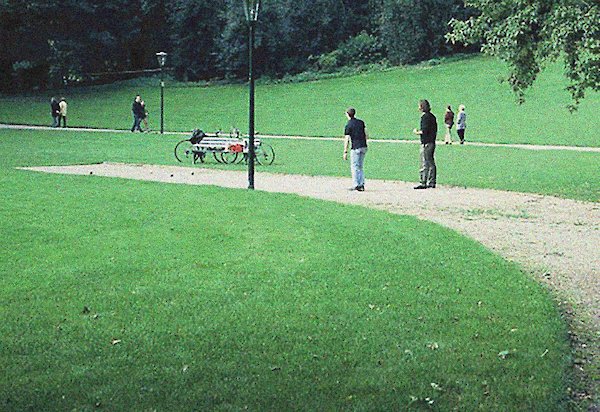Speakers
Gareth Doherty
Harvard University, Cambridge. Since 2005 a doctoral candidate at Harvard University Graduate School of Design and previously studied at the University of Pennsylvania and University College Dublin. Has worked with CHORA architecture and urbanism since 2000 on projects in Ireland and the UK. His research focuses on landscape and urbanism.
Landscape as Urbanism
Sir Geoffrey Jellicoe, the English landscape architect and co-author of ‚The Landscape of Man‘ predicted that within the first half of the twenty-first century landscape architecture would overtake architecture as “the mother of the arts”. Ten years after his death, Jellicoe’s prediction is within reach. Landscape has garnered huge attention in architectural and urban design discourse, pedagogy and practice. Although Jellicoe anticipated the increasing importance of landscape through his writings and projects, the term landscape urbanism – reflecting a synthetic practice – was first articulated in the late 1990s by Charles Waldheim.
The fusion of landscape architecture with urbanism is less the merging of two extremes as suggested by James Corner, and more a meeting of like minds. Landscape has a specialization in ecology and soft materials and urbanism is, perhaps, more commercially and focused on hard materials. They are unified
through the act of design, processes and spatial organization.
There are two common precepts to the nascent landscape urbanism discourse: first, that the urban landscape is shaped by synthetic forces which operate on multiple scales. Secondly, that landscape has the reciprocal agency to shape its context outwards. In this sense, landscape is a highly organized and complex matrix both affected by and affecting hugely diverse nodes and linkages.
Landscape urbanism arose as a response to a particular set of problems which include 1.) the blurring of the boundaries between city and country, 2.) largescale infrastructures such roads, sewage treatment and landfill sites and how they may be combined with public and ecological spaces, and 3.) the use of landscape as a remedial device in the city.
The lecture will address the catalytic effects of landscape architecture. It will ask if landscape can be the primary ordering device for urbanism and how it may initiate complex spatial reactions organized by a landscape matrix, citing examples of recent speculations and projects in Ireland and the Arabian Gulf. We will see that landscape urbanism is a hugely complex practice that attempts not to resolve problems but to set up the conditions from which solutions might emerge.
